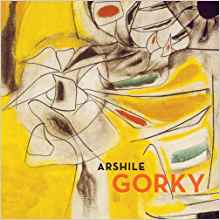Arshile Gorky
R220
Fully illustrated, with an insightful text by acknowledged authority Matthew Gale, this book will provide new insight into the life and carer of one of the twentieth century’s greatest painters.
In stock
Description
Arshile Gorky (1904-48) is a pivotal figure in mid twentieth century American painting, providing a bridge between European moderism and the generation who established the New York School. Coinciding with a major retrospective exhibition of his work at Tate Modern (3 February – 3 May 2010), this succinct and accessible survey examines a career that began and ended with tragedy but that produced some of the greatest paintings of a generation.
Gorky was born Vosdanik Adoian in Armenia, his family moving to the city of Van in 1910. When the Turkish army laid siege to Van in 1914, he took part in its defence, eventually fleeing 100 miles on foot with his sister and his mother, who dies of starveation in Eastern Armenia in 1919. In 1920, the artist arrived as a refugee in New York with his sister, taking his second name from the Russian poet Maxim Gorky, whose cousin he sometimes claimed to be. He swiftly turned to art, studying and later teaching at the New School of Design in Boston. In the 1920s he produced two versions of his most famous early work, The Artist and his Mother, derived from a single surviving family photograph. His later style wedded biomorphic, abstract and surrealist elements, making him a leading figure in the Abstract Expressionist movement. His career was cut short by a series of personal tragedies, which ended with his suicide in 1948.
Fully illustrated, with an insightful text by acknowledged authority Matthew Gale, this book will provide new insight into the life and carer of one of the twentieth century’s greatest painters.

